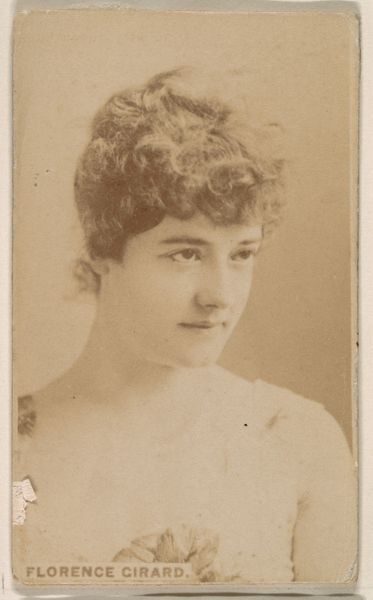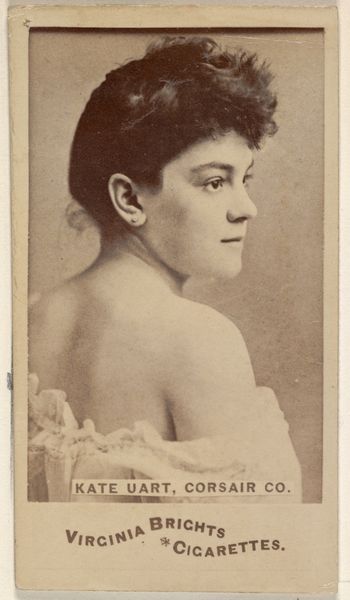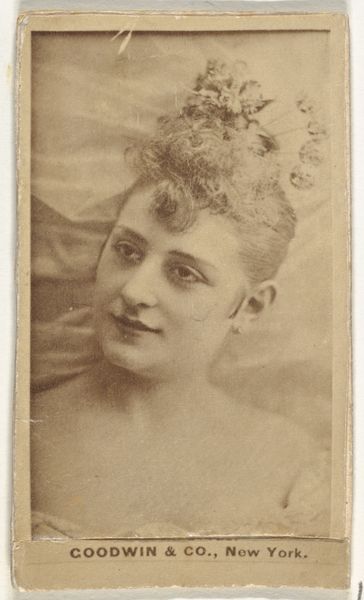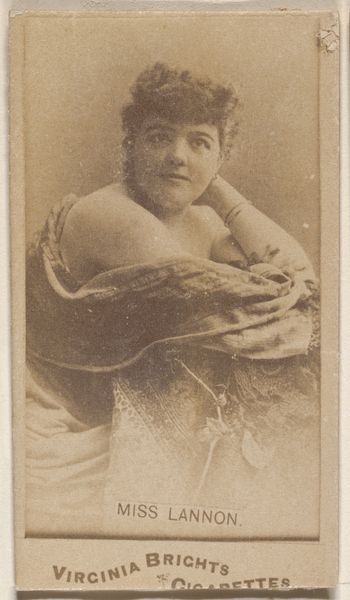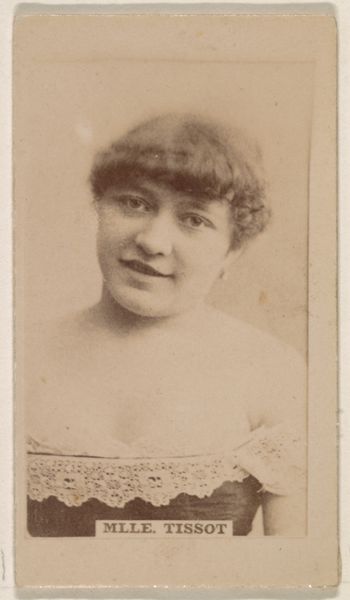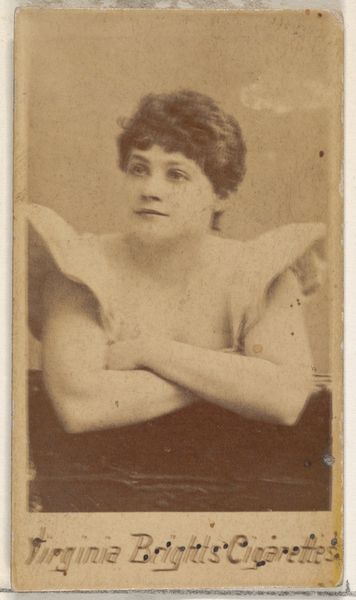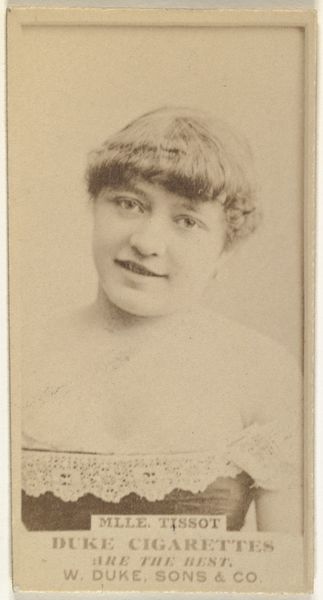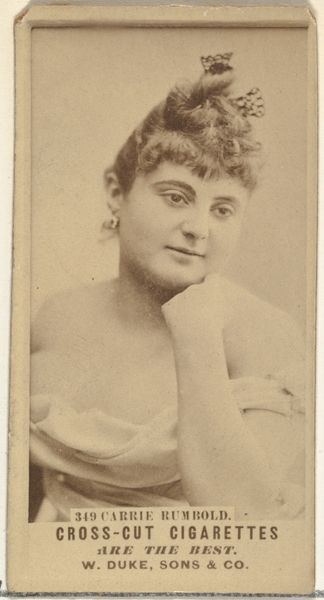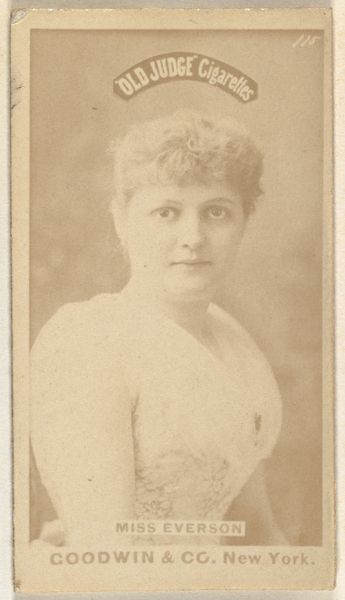
Agathe Renaud, from the Actresses series (N203) issued by Wm. S. Kimball & Co. 1889
0:00
0:00
drawing, print, photography
#
portrait
#
drawing
# print
#
photography
#
19th century
Dimensions: Sheet: 2 5/8 × 1 3/8 in. (6.6 × 3.5 cm)
Copyright: Public Domain
Editor: So, here we have "Agathe Renaud, from the Actresses series," a print from 1889 by Wm. S. Kimball & Co. It's interesting – it's both a photograph and a sort of promotional item. It makes me think about how celebrity was manufactured, even then. What jumps out at you about this piece? Curator: I see a convergence of performance, commerce, and the construction of female identity. Agathe Renaud, the actress, is packaged and sold alongside cigarettes. It begs the question, what narratives are being reinforced here? How is Renaud's image being used to sell not just a product, but also a particular vision of womanhood to consumers? Consider how these cards circulated – who was collecting them and what desires were being catered to? Editor: That's a great point – it is about more than just the portrait itself, it's about the system it was circulating within. Did the actresses themselves have much agency in how they were represented? Curator: Probably very little. This image participates in the male gaze, objectifying Renaud and reducing her to a commodity. Look at the suggestive bare shoulders and the slight turn of her head, inviting the viewer's attention. It's essential to understand how these images contributed to limiting the roles and perceptions of women in society. What power structures are at play here? Whose stories are amplified, and whose are silenced? Editor: Thinking about it that way, the portrait becomes more than just a pretty face. It's a window into the social and political dynamics of the time. Curator: Exactly. By examining these seemingly innocuous objects, we can uncover the complex relationships between art, gender, and consumerism. The actresses were celebrities, of course, but in that sense also laborers and products, with their bodies and names belonging more to commercial enterprise than to themselves. Editor: I’ll never look at a trading card the same way again! Curator: That's the power of art history; to challenge our assumptions and see the world, and the systems that built it, with new eyes.
Comments
No comments
Be the first to comment and join the conversation on the ultimate creative platform.
